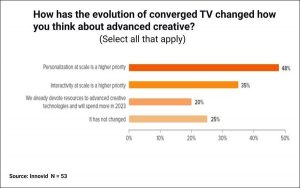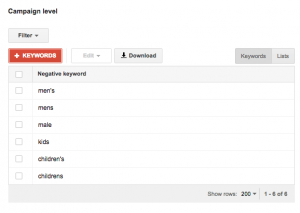What is an infographic? Though the popularity of the infographic has risen dramatically in the past few years, we still commonly receive questions about the various terms used to describe this field of design.
Data visualization, information design, visual content, and infographics are just some of these terms, and the confusion is understandable. Many of the labels thrown around are not only overlapping but also open to individual interpretation.
As an agency with a decade in the infographics game (and a book to boot), we’re here to demystify the term for you and give you the understanding—and language—to help you explore this exciting medium.
What is an Infographic?
In this era, “infographic” has become the broadest descriptor of a specific type of visual communication. The word is a portmanteau of “information” and “graphic.” This can include graphics showing data, copy, or both.
A simple Google Trends search will show that the word “infographic” has experienced a meteoric rise in popularity, largely due to the use of this medium for both branded and editorial content on the web.
But as the buzz surrounding this word has grown, so have the arguments regarding what content should be properly classified as an infographic. We believe this term should remain open and inclusive as the medium evolves.
That said, there are general categories that infographics can fall into: data visualization, information design, and editorial infographics. Each serves its own purpose and can be a powerful storytelling tool—when applied properly.
Data Visualization
Data visualization is the study of the visual representation of data. The real value of data visualization lies in its ability to clearly reveal information, whether it’s meta patterns or single data points. (This type of visual communication is particularly helpful when analyzing large data sets.)
In the age of big data, we need to both make sense of the numbers and be able to easily share the story they tell. To see how and why data visualization is so powerful, take a look at this video. (If you’ll note, we did indeed create a video that visualizes the power of data visualization—case in point.)
Now, want to see the power of data visualization at work? Take a look at the data visualization below. You probably don’t speak French, but you can likely decipher the information presented. This illustrates why data visualization is the most interesting and universal way to make information accessible and understandable to a wide audience.

Source: Francesco Franchi
In application, the practice of data visualization is the most numbers-heavy—and typically is what a purist would describe as a “true” infographic. But, as with all infographic design, the display method is rooted in the context and desired message.
You may be familiar with data visualization in the form of basic charts and graphs, but traditional data visualizations tend to be more complex, as they often are attempting to display a great number of data points. (For example, the interactive data visualization we created for Northwestern University of Qatar turned a staggering 10 million cells of data into an easily navigable experience.) In some cases, though, data visualization graphics functionally serve only as art pieces, if no specific message can be extracted.
When properly executed, however, they should be both beautiful and meaningful, allowing the viewer to decipher data and recognize trends while admiring its aesthetic appeal. (To dive deeper, learn more about why you should embrace the power of data storytelling.)
Information Design
Information design is a subset of graphic design that focuses on the display of information efficiently and effectively. It’s a broad category, encompassing many functional design disciplines.
It differs from data visualization because it is not made from specific data points but rather concepts or other information. For example, it can be used to describe process, anatomy, chronology, or hierarchy.

Information design comparing prison food to school lunches
In your day-to-day life, you may encounter information design in the form of flowcharts, organizational diagrams, or timelines, clarifying structure and order in a way not possible solely using text. Instructional diagrams, anatomical illustration, and some applications of cartography would also fall under this label.

An epic Star Wars flowchart
For information design, the goal is to use design to communicate a message that is both clear and universal.
Editorial Infographics
Although major publications have been featuring infographics for decades, there is a shift in the style and type of visual content they are producing. This trend has also been spurred by the rise of social. Infographics have become highly shareable content, so publications are embracing the medium to better engage readers.
Previously, editorial infographics were limited to simple bars, lines, and pies, using illustration solely in more complex features to map an area or show the anatomy of an object.

A sample editorial infographic from USA Today
But there has been a dramatic increase in the number of publications utilizing graphic content to replace more traditional editorial features.

A GOOD Magazine infographic on gun ownership

An editorial infographic spread in Miller-McCune magazine
This adoption has also spread into the commercial sector, with many start-ups and larger corporate blogs using graphic content or “charticles” to display thought-leadership within an industry and bring attention to their site.
While some of these infographics can cross the fine line over to advertorial, the good ones do not. The value of editorial content is best realized when providing interesting insight from uniquely informed sources.
That said, infographics are still an incredibly valuable tool in marketing.
What’s in a name?
When talking about infographics, we need to acknowledge the room for change and growth. Design is inherently about using innovation and imagination to provide clarity, and so infographics will continue to evolve over time.
We just hope that as they do, creators will maintain a commitment to quality and integrity in the medium.
Digital & Social Articles on Business 2 Community(180)
Report Post








